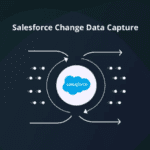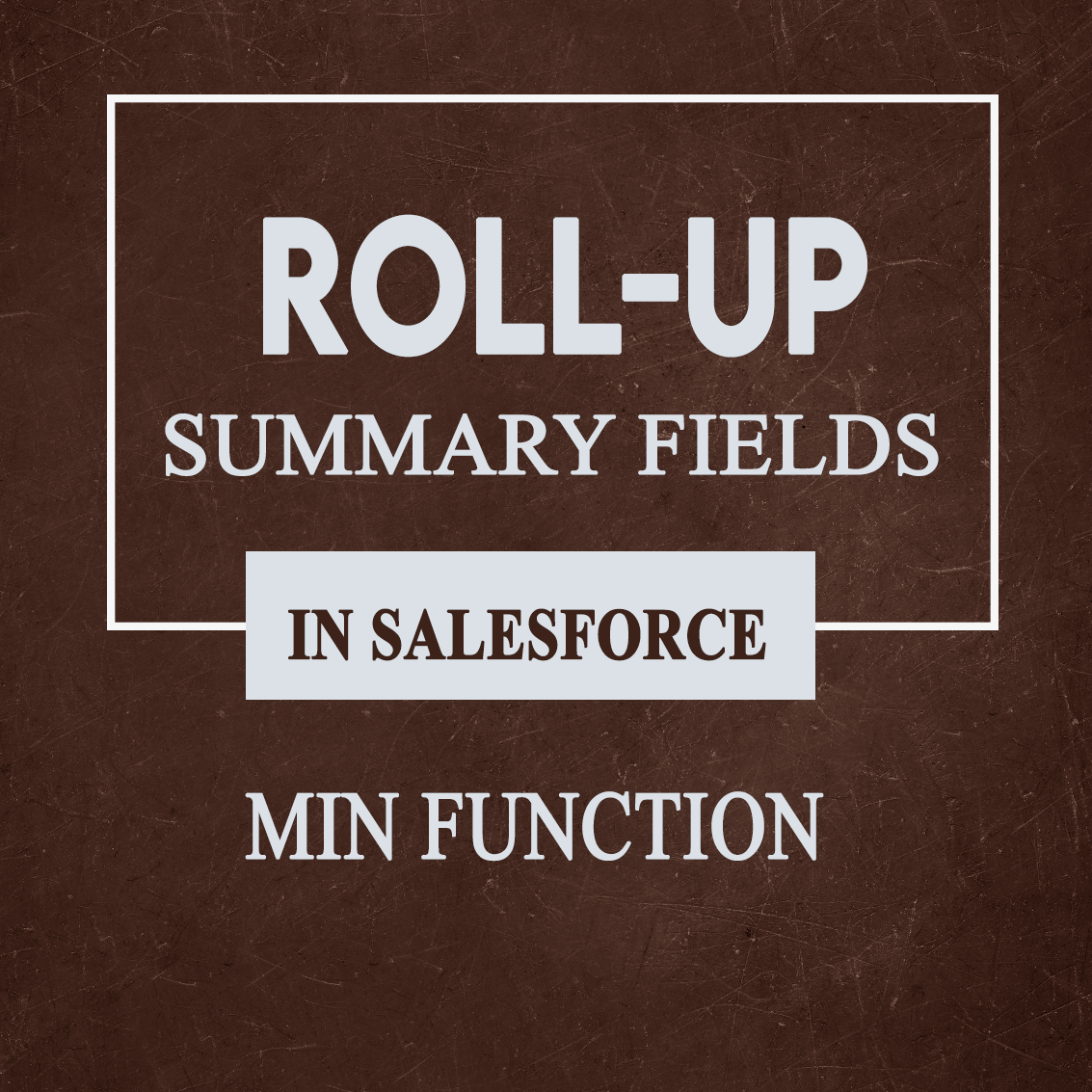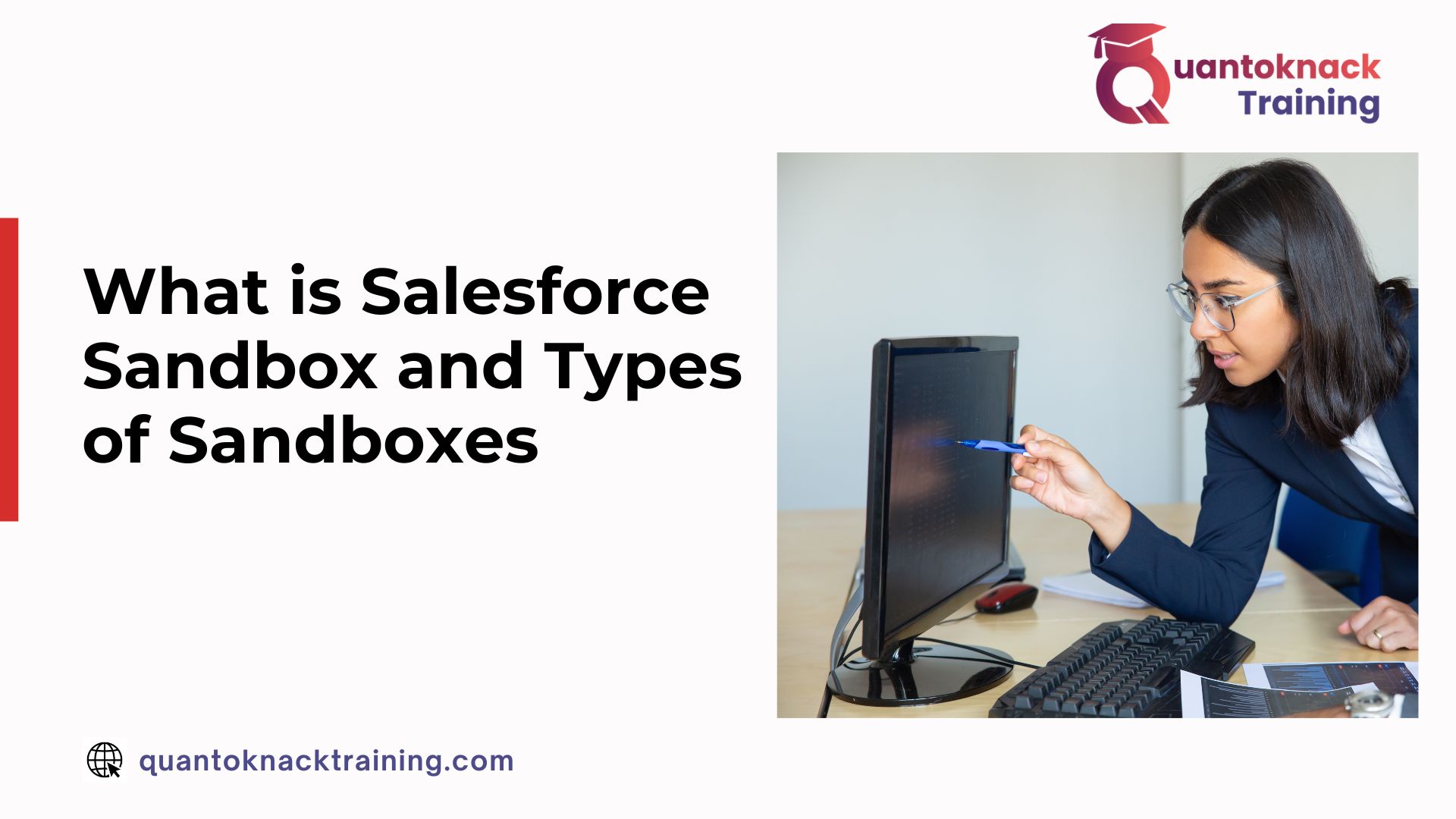
Validation rules validate if the user entered data in a record meets the standards you define before the user can save or update the record.
Let’s take a use case where the Universal container app has been developed for a service agent where they can create or update new Account records but the client needs a data validation where the service agent can not create or update the account record if the Account Ownership is “Public” then the standard Annual Revenue should be required.
Now, let’s see step by step how to create a validation rule as a Salesforce Admin.
Step 1: Setup -> Object Manager -> Account – Validation Rule.
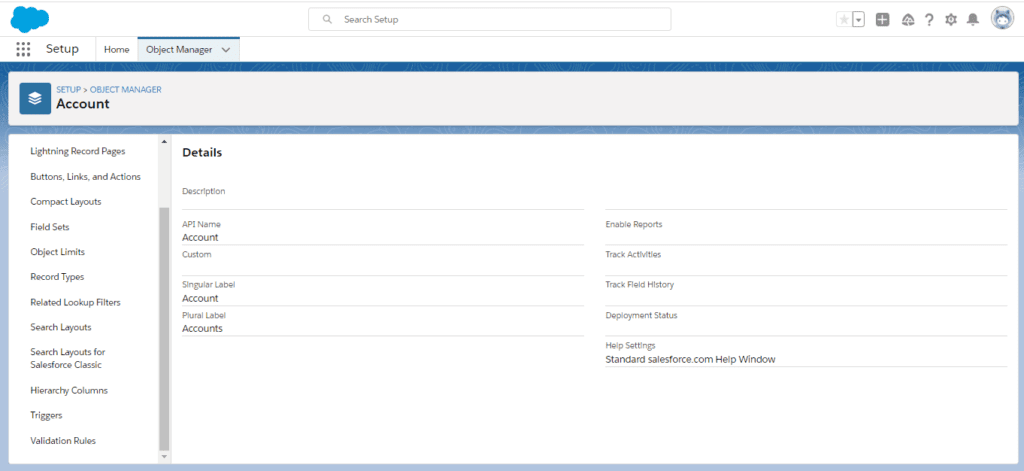
Step 2: On the Right side on the top of the screen a button presents i.e., “New” click on it.
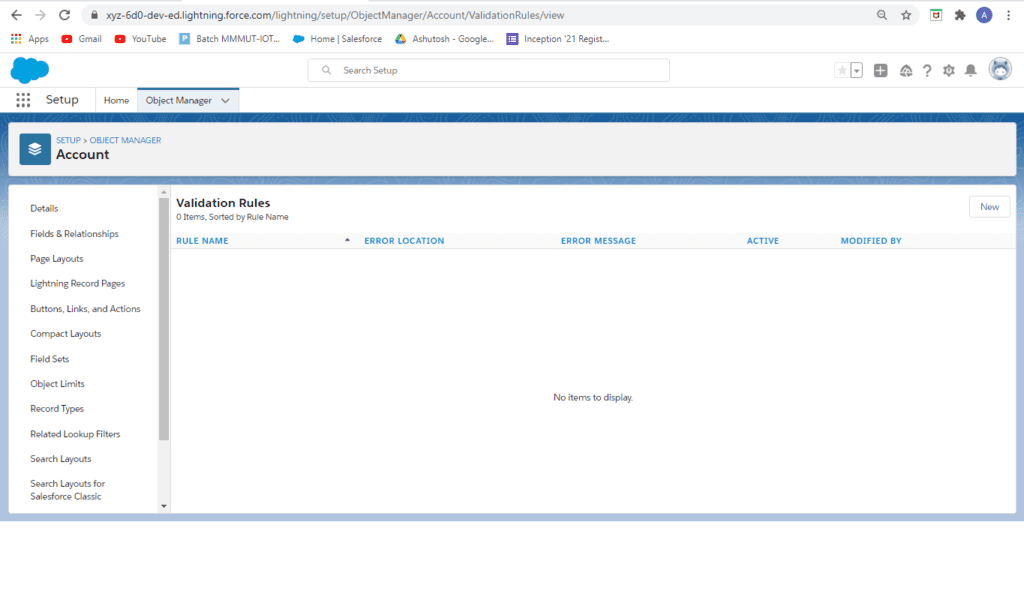
Step 3: A screen displayed contains the following fields as shown in the screenshots, try to fill all the details i.e., “Rule Name” and try to write the expression using the tabs: Insert fields, Insert Operator, and functions

Provide the Rule name for our validation i.e, “AnnualRevenue_Required_For_Public_Owner” . As the Ownership is a picklist field we have to use the function “ISPICKVAl” then we have to insert fields and try to create the expression as shown in the screenshot.
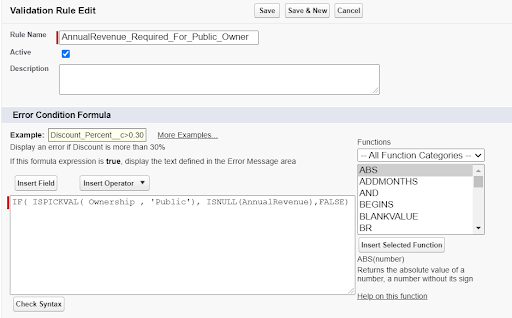
Check the syntax then write the message what to be displayed in the “Error message” such as “For Public companies Annual Revenue cannot be null”
Select the desired place where to display the error message and then click on “Save”.
Step 4: Our Validation Rule has been implemented. Now, it’s time to check it.
Step 5: Goto-> Account Tab -> New
Step 6: Fill all the necessary fields and try to keep the Ownership field to public and do not fill anything in the Annual Revenue field
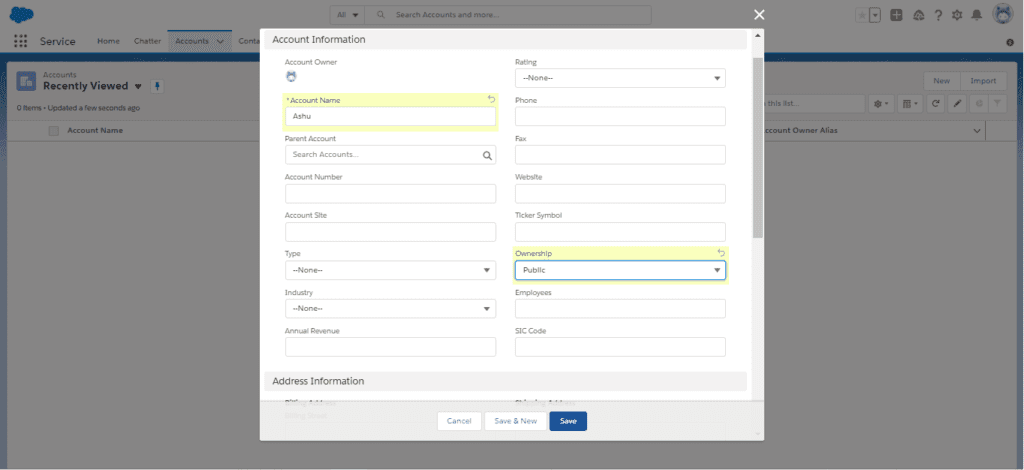
Step 7: Click on Save
ERROR message appears on the screen as shown in the screenshot
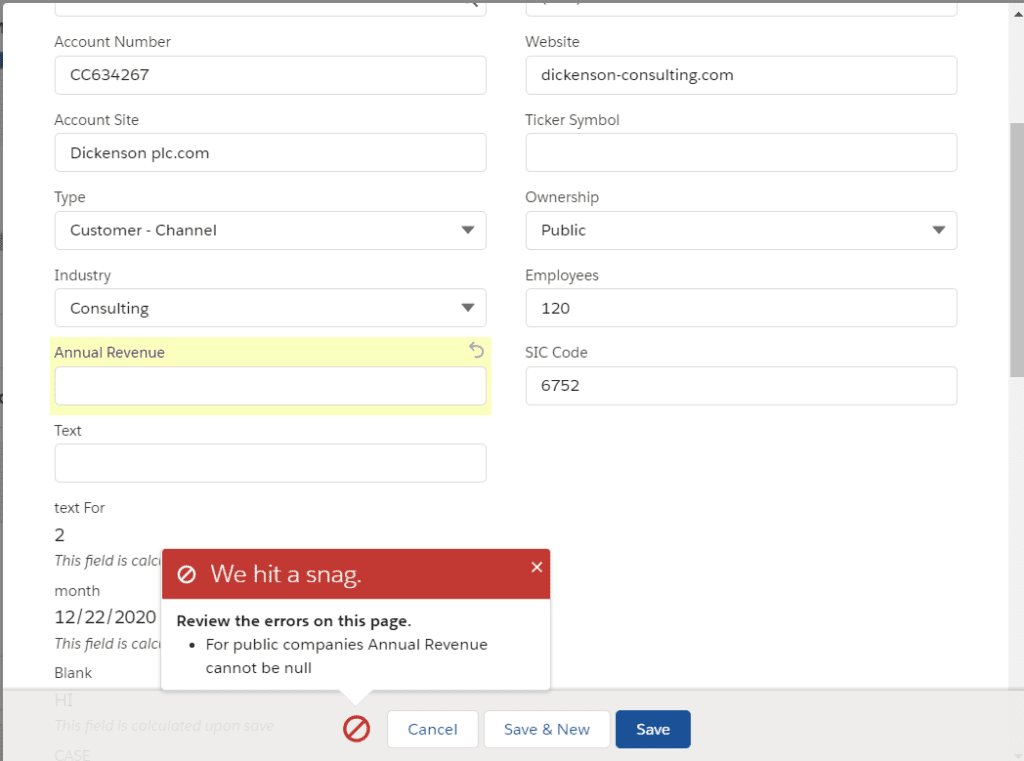
Again try to provide Annual Revenue and save the account record

Now this time the message displayed “Account has been created” as shown in the screenshot.
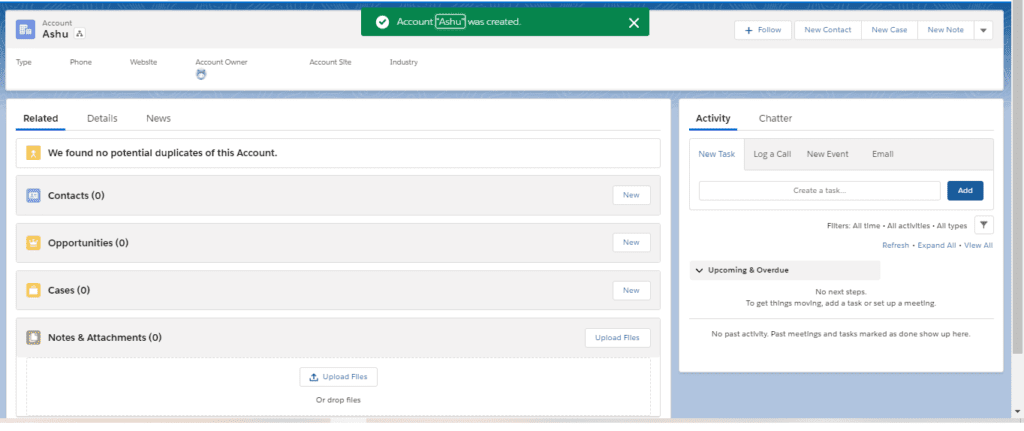
Conclusion: Here we have got a detailed understanding of how to create a simple validation Rule on the standard object where it helps any organization to prevent bad data and improve organizational productivity.
Happy learning
Written By: Ashutosh Tiwari



